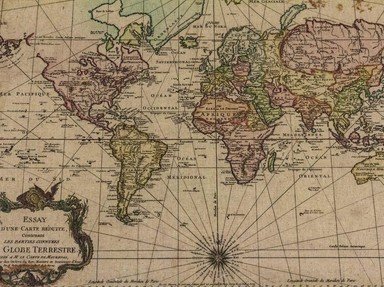Quiz Answer Key and Fun Facts
1. The construction of this medieval castle in Algarve, Portugal commenced in the late 12th century AD by the Moors. It was said to be one of the seven castles represented on the flag of Portugal. What was the name of this medieval castle?
2. Arsinoe was an important religious city where people prayed to a crocodile deity known as Sobek. The reverence held by the city's inhabitants to crocodiles led to it being named "Crocodilopolis" by Ancient Greeks. In which country is Crocodilopolis located?
3. The people of this Egyptian city, named after a species of fish in the Nile River, had built many ancient churches and monasteries. Many important ancient Greek literary works, including fragments of the Gospel of Thomas, were found in this city. Which city was this?
4. This Spanish settlement initially known as Rey Don Felipe was founded in 1584 AD by 300 settlers. However by 1587 AD, all but 18 of the settlers had died of starvation. Such was the plight that it was renamed 'Puerto Hambre'. In which country was this settlement located?
5. Which Greek island and city was a prosperous commercial centre located along trade routes? It was the birthplace of the famous mathematician Pythagoras and the astronomer Artistarchus. The tunnel of Eupalinos could also be seen there.
6. There is an island arising out of Lake Van in Turkey, on which a 10th century Armenian church once stood. Known as the Cathedral Church of the Holy Cross, it had numerous reliefs carved into its walls depicting Biblical scenes. What was the name of the island?
7. Occupied by the crusaders in the First Crusade in 1099 AD, Krak des Chevaliers was reinforced and became the headquarters for the Knights Hospitaller. However, it was captured by Mamluk Sultan Baibars in 1271 AD. Which country is Krak des Chevaliers located in?
8. An ancient settlement in Pakistan appeared around 7000 BC, making it the oldest farming settlement in South Asia. However, it was abandoned sometime around 2500 BC. Name the ancient settlement.
9. Located in the state of Connecticut in the USA, this archaeological site contained stone circles and a place known as the "Calendar Chamber". Artifacts dating back to 2000 BC were found there. What was this archaeological site known as?
10. Founded sometime in 5 AD, Aventicum was an important Roman city occupied mainly by a Celtic tribe known as Helvetti. An amphitheater capable of seating 16,000 spectators was built. In which country was Aventicum located?
Source: Author
knightmyst
This quiz was reviewed by FunTrivia editor
Pagiedamon before going online.
Any errors found in FunTrivia content are routinely corrected through our feedback system.
